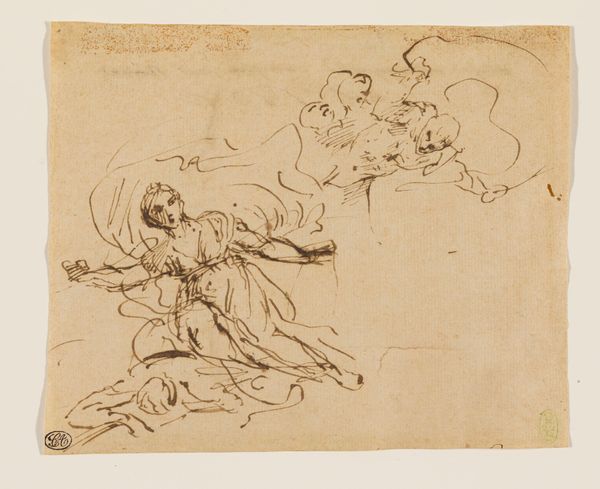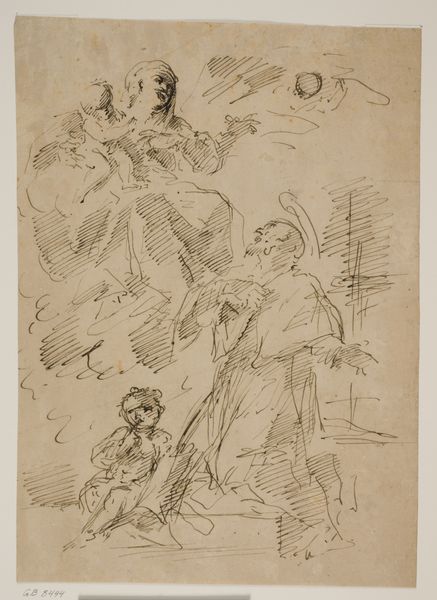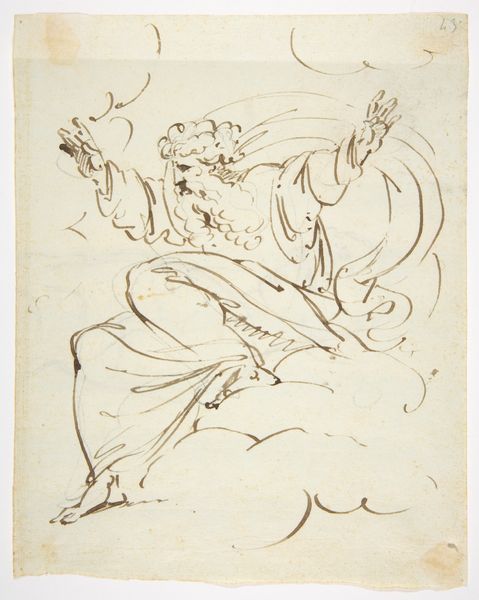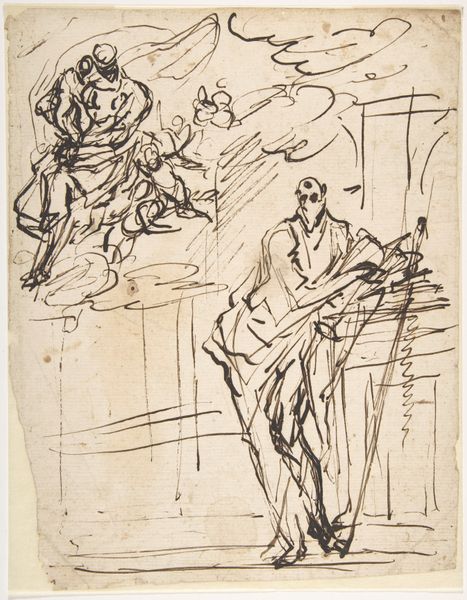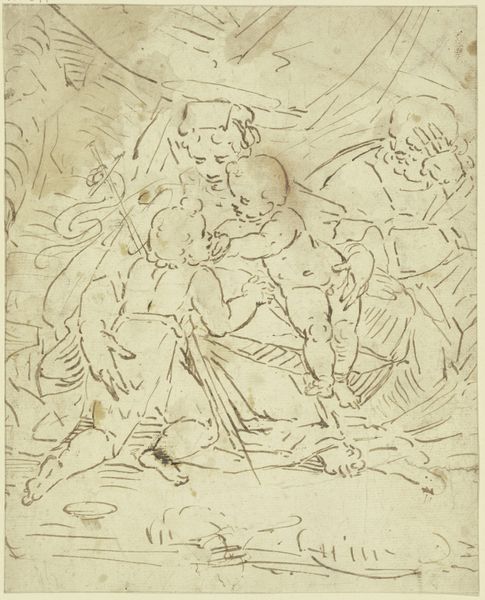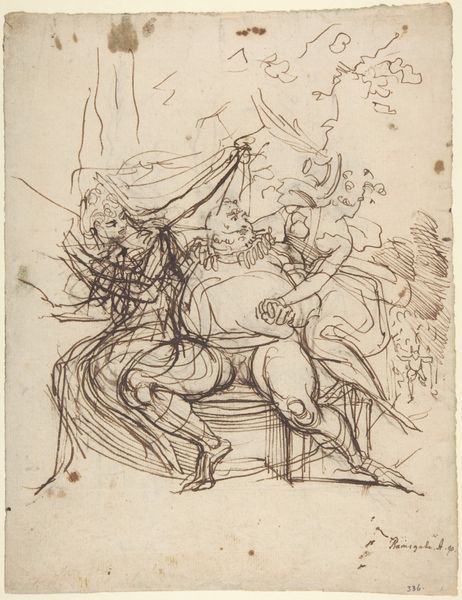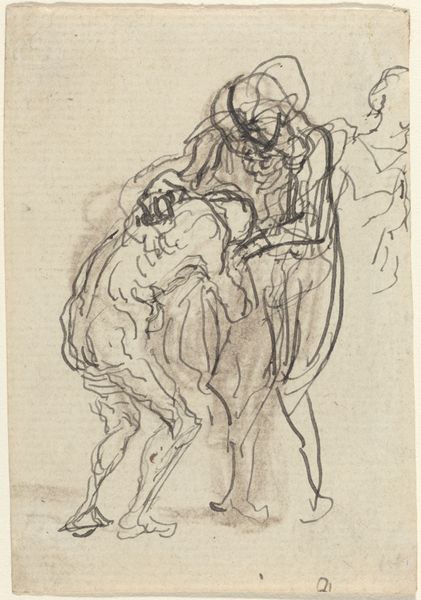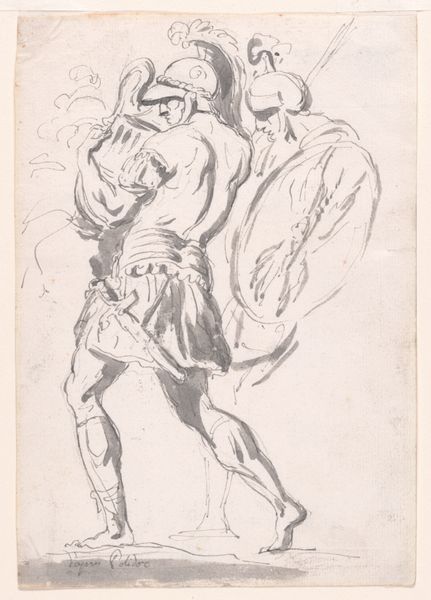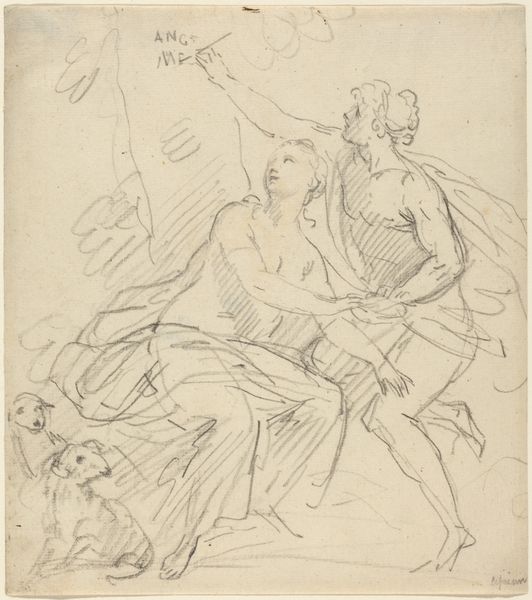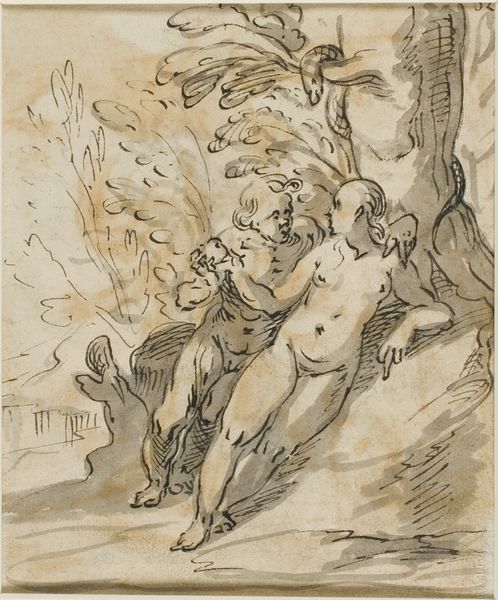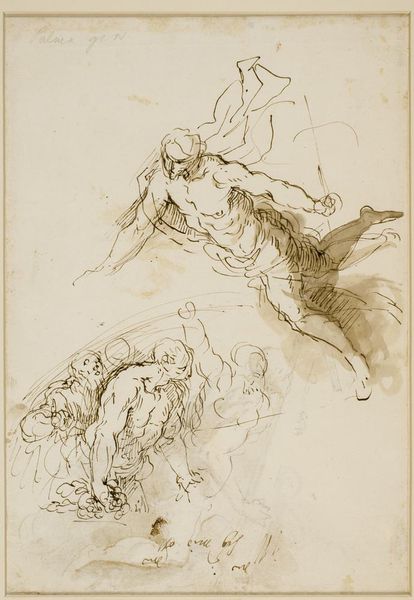
drawing, ink
#
drawing
#
baroque
#
figuration
#
ink
#
ink drawing experimentation
#
history-painting
Dimensions: 189 mm (height) x 140 mm (width) (bladmaal)
Editor: This is Ciro Ferri’s “Scene of Expulsion,” created sometime between 1634 and 1689. It's an ink drawing, and I’m really drawn to its almost frenetic energy, even in this small format. What strikes you about this work? Curator: What grabs me here is the sheer process of mark-making, the immediate translation of thought into image. The frenetic energy you mention isn't just visual; it hints at the very labor involved in its creation. Look closely – the layering of ink, the quick, repeated strokes. We're seeing not just a scene, but the artist grappling with the narrative in real time. Editor: That makes sense. It does feel very immediate, like a sketch done in preparation for something larger. Curator: Exactly. Think about the social context too. Ferri was working within a studio system, likely producing countless drawings like this. These weren't necessarily destined for a grand exhibition, but they served as vital steps in the creation of larger, more “finished” works. How does understanding it as a process rather than a precious object change how we value the art? Editor: So, it's less about the "final product" and more about the skill and labor embedded in the process. The physical making of the drawing is valuable on its own. It highlights the artist's hand, almost like performance documentation. Curator: Precisely! It allows us to appreciate the work outside traditional hierarchies. We can consider the materials themselves – the specific inks, the paper quality – and how these elements contribute to both the artistic outcome and its function within the studio economy. What are the differences and relations of the drawing to the final work? Editor: I never thought about it that way, that process can be just as meaningful, and that the drawing, while "unfinished", can give more immediate access to the hand of the artist. Curator: These quick, dynamic studies can give great insight into workshops' ways of creating narrative art in baroque Italy.
Comments
No comments
Be the first to comment and join the conversation on the ultimate creative platform.
